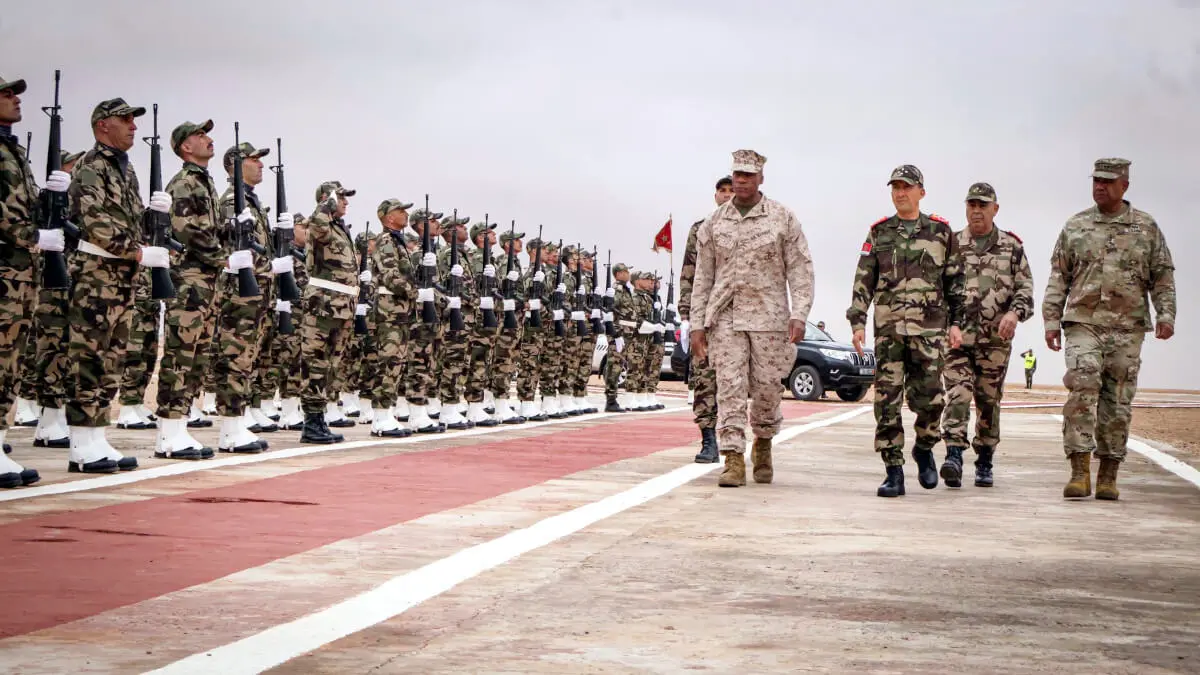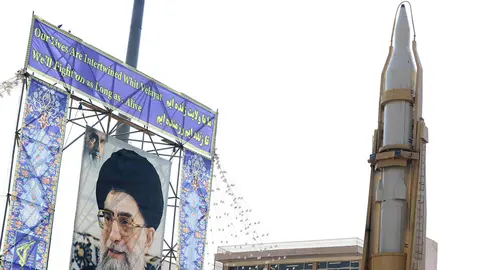From Tbourida to drones: Morocco shows the way

There is no traditional Moroccan market without weapons, swords, daggers or old firearms such as pistols and traditional Moroccan Tbourida display rifles.
It is generally understood that these rifles are part of the legacy of Moroccan-Spanish or Moroccan-Portuguese relations. In fact, Morocco has been for centuries the weapons manufacturer of the western Mediterranean. European armies at that time were small, professional forces consisting mainly of professional soldiers. Wherever there was need of swords, spears, rifles or cannons (after the introduction of gunpowder technology as a propellant for bullets in rifles and artillery or an explosive force in shells or other munitions), Moroccan military workshops were always ready to fulfil the orders that came.
Wars changed quantitatively and qualitatively after the Renaissance and the modern industrial revolution, but the culture of craftsmanship survived in Morocco. When you walk around any Moroccan traditional market you are bound to notice the high level of skills maintained generation after generation.
A few days ago, the Moroccan parliament approved a bill to provide tax breaks for defence manufacturers. A number of American, European, Indian, Chinese and Israeli defence companies has moved early to set up production lines in Morocco. The kingdom is today the most stable place in Africa’s northwest, and the site of many advanced security and industrial ventures.
These developments did not happen overnight nor by chance. There is a civilian and educational infrastructure that has provided the industrial basis for such projects. The automotive industry preceded the military industries in Morocco, a country which moved ahead of other countries in the region in building a network of world-class roads, railways and ports that is the largest and most advanced in the region.
The nature of the ongoing conflicts in West Africa requires different types of weapons and military technology. A few hundred terrorists or insurgents can have the same disruptive impact caused in the past by tens of thousand of troops. With the resounding failure of the French Barkhane Operation, it became clear that military technologies and training techniques dating back to a decade or more have become obsolete and needed upgrading in order to keep up with what is known as the “revolution in military affairs” (or RMA).
To monitor the thousands of square kilometres of sand dunes and keep watch for the infiltration and smuggling of weapons, drugs and people, the countries of the region need military equipment with lighter specifications and longer operational duration (such as drones flying for days) together with decisive firepower. This is very different from the type of useless posturing put on display as is the case with all the drones launched today by Iran and the Hezbollah, Hamas, the Popular Mobilisation Forces and Houthi militias against Israel.
The region needs integrated monitoring and tracking systems shared by neighbouring countries in order to carry out missions combining efficient human capabilities and technical means. And all this without burdening the budgets of developing countries that are already facing an outflow of their populations in the direction of Europe in search of better living conditions.
No one is interested in those loud displays of aircraft built in the sixties and seventies, which Russia would be very happy to continue selling to ageing armies in the region.
No one has any need for all those tanks and armoured vehicles that did not perform well on European soil as we saw during the Ukraine war. Meanwhile terrorists and drug smugglers try to outsmart border control forces in the Sahel region using four-wheel drive vehicles equipped with light armour, surveillance devices, along with simple drones that help them monitor the advance of government troops who have little chance of success in the sandy and ever-changing terrain of the desert, where heavy tanks have a tough time making headway.
The theatre of the RMA combines high mobility, adequate training, special manufacturing of drones, weapons and smart missiles, with high discipline in preventing information leakage in stable countries whose security is not compromised and where information security is handled with the highest level of professionalism by states which do not underestimate the tasks at hand nor engage in showmanship.
The “cut and paste” approach which Iran has adopted in developing its military industry has revealed the danger of easy shortcuts in research and development. To affix a name with a religious connotation to a primitive drone will not make it any more capable of penetrating enemy defences. “Shahab,” “Badr,” “Raad,” and other similar names attached to Iranian drones and missiles may be attractive when put on murals or on missile-carrying vehicles in a Tehran parade. They could help only if only the performance matched the name. We know very well however that we are in a new era where such displays do not count. Before we ask the Israelis whether the missiles or drones with flashy names have had any impact on them, we must ask the Ukrainians: how many of those missiles that Iran sold to Russia have not been shot down by Ukrainian defences and why did Moscow eventually return to science and logic announcing its use of real hypersonic missiles and advanced manoeuvring drones?
Wars may be raging in Ukraine, southern Lebanon and the Gaza Strip. But these wars are premised on the fact that no one fights with the weapons or mindsets of previous wars, and that everyone must prepare for future wars with different specifications based on solid human, industrial, and military grounds. This is what the Moroccan model demonstrates and which armies in the Sahel region are trying to emulate, or as we have seen (without many of us really noticing) how the very mobile Emirati forces, backed with surveillance, drones and a high level of training, fought and won in southern Yemen. This critical mass is provided in Morocco, with a combination of political will and the flow of technology, knowledge, capital and the confidence that technology transfer can be carried out without the risk of advanced technologies ending up in the wrong hands, which is a major Western concern, especially with the widespread use of artificial intelligence.
From a human and geographic perspective Morocco constitutes a safe link in the chain of international relations. It has long built a relationship of trust within its European-Arab and European-African environments, steering away from the inconsistency in attitudes that has poisoned the relations between other nations in the region.
This is not just the case of Algeria with its wavering policies within its economic and human environments. It is also the case of France’s faltering policies, which have cost the Sahel and Sahara region much of its security.
By the time the countries claiming to face infiltration attempts, be they Westerners, Zionists, Emiratis or others, realise they were in pursuit of illusions born of their inability to keep up with Morocco’s progress, the kingdom will have already made great strides rendering obsolete the many armoured vehicles and tanks which are sitting idly and rusting in the desert sun while more efficient alternatives emerge.
Horses gallop in the traditional Tan Tan festival at the gateway to the Moroccan Sahara, and the knights hold their rifles as they parade in the beautiful traditional Tbourida. But on the horizon, you can see advanced armed drones moving in combat or training patrols, ensuring the country’s security and setting an example for others who want to provide their own countries with the type of security where trust in relations and peace come together paving the way for success.
Haitham El Zobaidi is the Executive Editor of Al Arab Publishing House.



